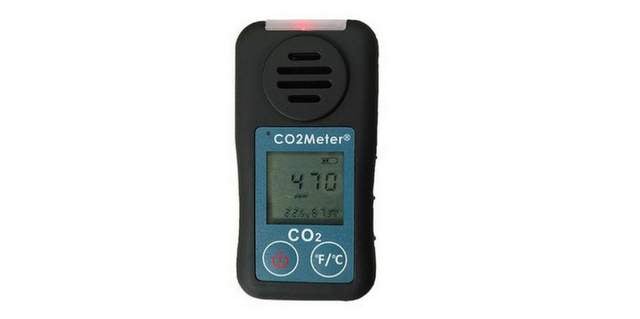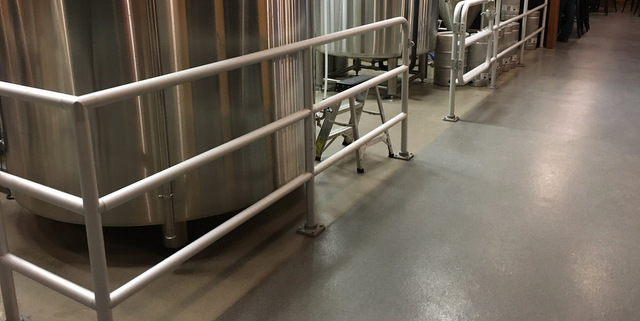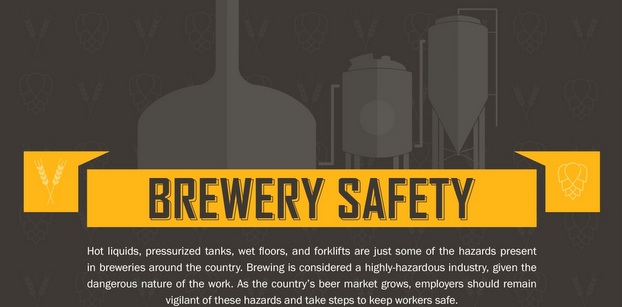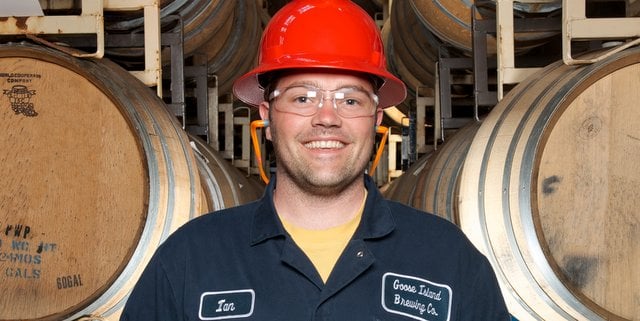
A lot of brewers have either succumbed to carbon dioxide in a beer fermentation tank or they know someone who has. Most of the time it’s told as a funny story. The sudden shortness of breath is quickly followed by dizziness. The worker jumps back from the tank and hopes no one notices. Occasionally someone passes out, only to wake up on the floor surrounded by fellow workers who shrug it off as a rite of passage for all brewers. Of course, no one tells the owner. It was a stupid mistake, it was embarrassing and it’s a lesson not soon forgotten.
I recently asked a friend who is a brewmaster at a local brewery about the subject. His first response was, “We can’t afford brewery safety equipment.” When I said a pocket CO2 meter didn’t cost a lot, he shrugged.
“We only have six tanks,” he said. “I’m the only one who goes into them, and I know which ones can kill me.”
If I was a brewery owner, I’d shudder if one of my employees said this.
Most common OSHA violation
Gabriel Sierra, managing director of Prometrix Safety Consulting said the most common OSHA violations include lockout/tagout and confined spaces accidents. Both these kinds of accidents can happen in breweries where fermenters, grain silos, kettles and other machinery are used. OSHA standard 1910.146 defines a “permit-required confined space” as:
1. Is large enough and so configured that an employee can bodily enter and perform assigned work;
2. Has limited or restricted means for entry or exit (for example, tanks, vessels, silos, storage bins, hoppers, vaults and pits are spaces that may have limited means of entry.); and
3. Is not designed for continuous employee occupancy.
In addition, beginning January 8, 2016 OSHA began citing employers who do not follow the Confined Space in Construction Rule.
OSHA defines a confined space as “a space whose configuration and/or contents may present special dangers not found in normal work areas. Confined spaces may be poorly ventilated and, as a result, contain insufficient oxygen or hazardous levels of toxic gases. Working in a tight space can prevent a worker from keeping a safe distance from mechanical and electrical hazards in the space. Fumes from a flammable liquid that is used in a poorly ventilated area can reach explosive levels. Such hazards endanger both the workers in the confined space and others who become exposed to the hazards when they attempt to rescue injured workers. In a number of cases, rescue workers have themselves died or been injured because they did not have the training and equipment necessary to conduct the rescue safely.”
To help small businesses become compliant, OSHA has published the Small Entity Compliance Guide. This is a plain language explanation of all aspects of the Confined Space in Construction Rule, including how eliminating or isolating any hazards can allow you to reclassify a permit required confined space as a non-permit confined space.
OSHA requirements for breweries
If you own or work in a brewery, you already have a good idea what a confined space is, and how potentially dangerous they can be.
While you should do your own homework, here’s an overview of what OSHA expects you to have in your brewery:
- Safety data sheets (SDS, formerly MSDS) on all gas and liquids used in the brewery.
- Instruction in OSHA regulations relating to ergonomics, walking and working surfaces, fall protection, confined spaces, powered industrial trucks, chemical safety and personal protective equipment.
- A written (and tested) emergency evacuation plan, confined space protocol and chemical safety plan.
- Know and follow OSHA injury reporting regulations.
- Develop a process that allows employees to report safety concerns and incidents to the owner without fear of retaliation.
- Regular safety meetings and training for employees that address all of the above.
For many breweries, the plan can be completed by working with a safety consultant in combination with the insurance company. Brewers may even be eligible for lower cost insurance once all safety protocols have been completed.
This post was sent in by Morgan Morris, director of marketing for CO2 Meter, which offers the RAD-0102-6. It is a CO2 meter that includes an alarm that meets OSHA requirements for time-weighted average (TWA) personal exposure limit (PEL) for CO2.





Leave a Reply
You must be logged in to post a comment.